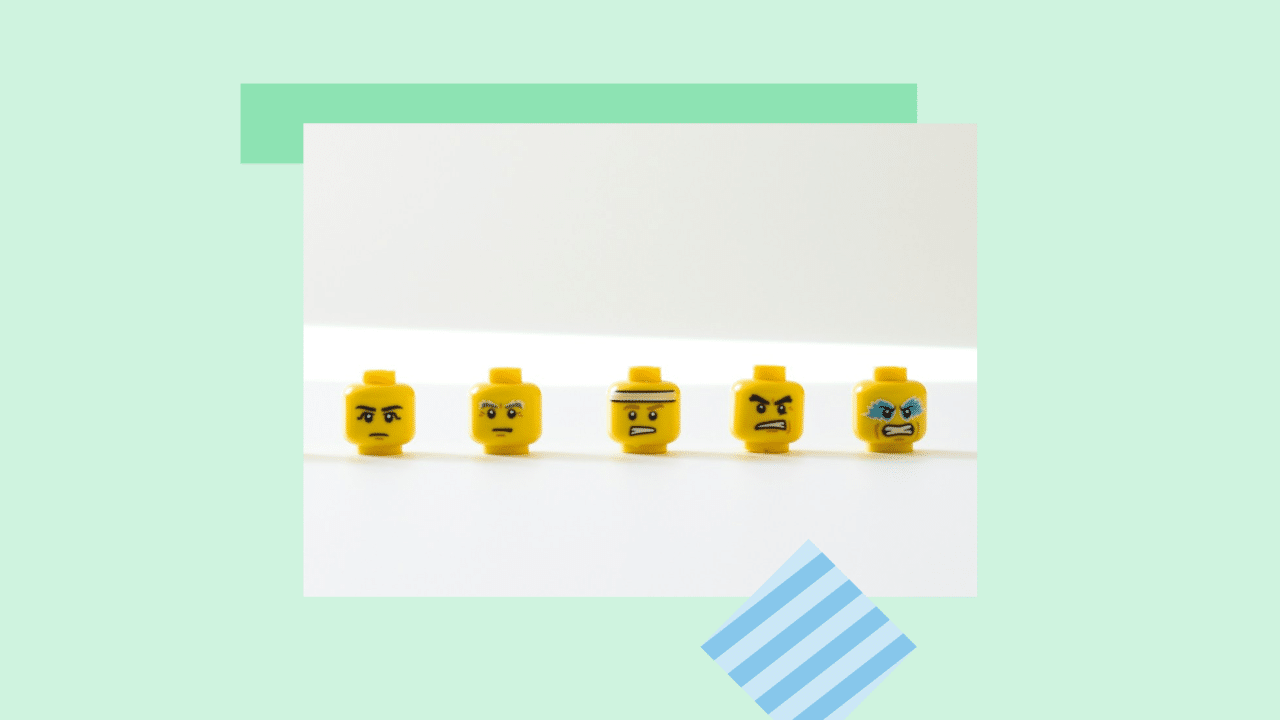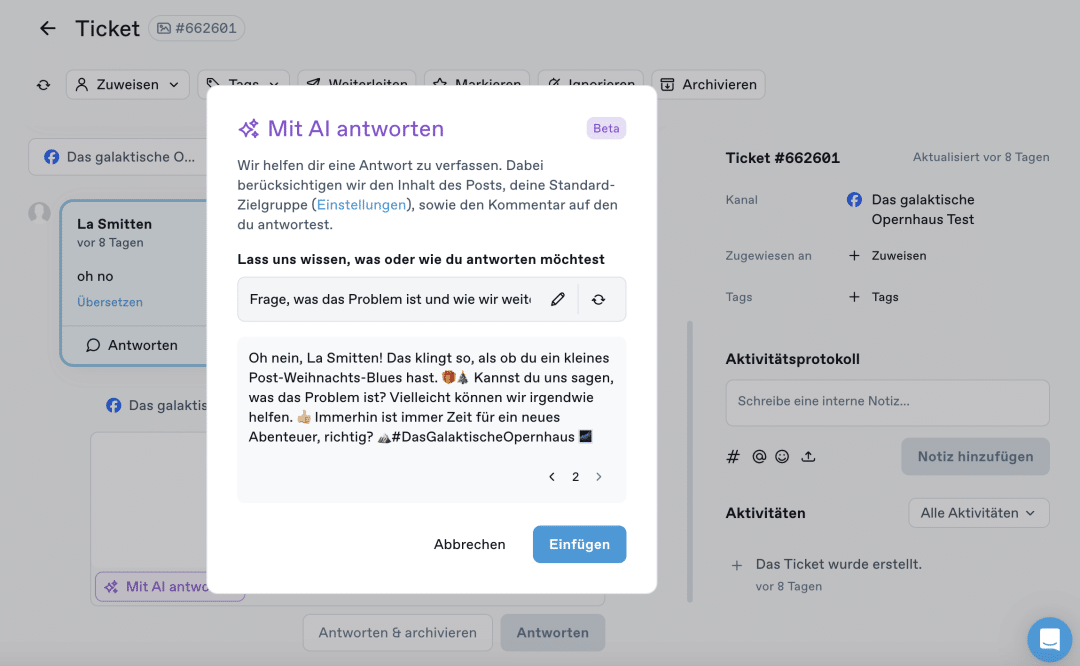
Community Moderation: How to Deal With Negative Comments on Social Media
In an ideal world, everyone on social media is interested in constructive interaction. As a community manager, you can content yourself with giving the interaction little nudges in the desired direction and thanking people for their praise.
Unfortunately, the reality is more complicated. Here, every community manager is regularly confronted with spam, hate comments, insults or other destructive comments, some more, some less.
The question then arises: How do you deal with negative comments and what options are available to you?
We address these questions below.
The negativity bias – why good community moderation is so important
Sie sehen gerade einen Platzhalterinhalt von Standard. Um auf den eigentlichen Inhalt zuzugreifen, klicken Sie auf den Button unten. Bitte beachten Sie, dass dabei Daten an Drittanbieter weitergegeben werden.
Weitere InformationenEverything was actually fine, except for this one thing …
Who hasn’t experienced this? Negative experiences and thoughts get a lot of attention, even if they are only exceptions. Scientists speak of negativity bias in this context. This tendency probably developed in the early history of mankind and was sometimes essential for survival.
For community management, this means that one negative comment often has more impact than 10 positive ones. It can cause lasting damage to communities or even a brand’s image and result in a full-blown shitstorm. Of course, the risk multiplies if it is not just one negative comment, but many. In addition, a lot depends on how a community manager reacts to the comment.
The good news is that negative comments also present an opportunity. A confident response can strengthen trust in your brand.
That’s why it is immensely important to develop a good strategy for dealing with such comments.
Types of negative feedback
Negative feedback on social media can take many forms. It is important to differentiate between them in order to respond correctly.
Here are the most common types:
Constructive criticism
Constructive criticism is valuable. It shows you where there is room for improvement and helps you to optimize your product or service. This type of feedback is often specific. For example: “I found the delivery too slow. Maybe you could deliver faster in future?”
Under no circumstances should you ignore, delete or hide serious criticism. Otherwise you run the risk of being accused of censorship. A positive relationship between companies and customers depends on both sides respecting each other and admitting mistakes.
However, it often makes sense to move the discussion to private channels. A direct exchange offers the opportunity to find a good solution for both sides and prevent the complaint from making waves
Hate comments
Hate comments are hurtful and often personal. They aim to provoke or offend. They rarely contain useful information and are usually full of insults or exaggerated criticism. For example, “Your service is garbage! You have no idea what you’re doing.” This is less about constructive feedback and more about venting frustration or forcing a negative reaction.

In this case, you can try to smooth things with a polite reply. If the comment is offensive and/or contains obscene, racist, or similar statements, it is often better to hide it or delete it immediately.
You can indicate in the guidelines which types of comments will be deleted. The advantage of hiding comments is that the author will not notice.
Dissatisfied customers
Sometimes customers express their frustration because they are dissatisfied with a product or service. These comments can be emotional but are often based on a genuine complaint. For example: “I still haven’t received my parcel and no one is helping me!” In this case, you should listen and try to solve the problem.
Ask the person to write you or your colleagues a direct message.

Trolls
Trolls are a phenomenon in their own right. They post negative or provocative comments, often without any real connection to the topic. Their aim is to cause arguments or annoy others.
To distinguish constructive criticism from hate comments or trolls, it helps to pay attention to the tone and content.
Constructive criticism is factual and often includes suggestions for improvement. Hate comments and troll posts, on the other hand, are emotionally exaggerated and rarely contain concrete suggestions. How you deal with these comments should vary accordingly. Once you have identified a person as a troll, you can block them with a clear conscience.
Strategies for dealing with negative feedback
We have already discussed some possible reactions to different types of negative comments.
Here we present them to you in more detail.
Always important: react quickly
When a customer complains, they expect a prompt response. This shows that the concern is being taken seriously. The faster you respond, the more likely you are to prevent the frustration from building up further or other users from jumping on the negative comment. Quick responses signal professionalism and a sense of responsibility.
Important: Reacting quickly does not immediately mean solving the problem. It is important that you show the other person that you take their concerns seriously. Emphasize that your team is working on solving the problem but that it will take some time.
Maintain politeness while setting clear boundaries
Remain friendly, even if it’s difficult. Otherwise you risk a conflict getting out of hand. In some situations, however, you should set clear boundaries. You should not tolerate insults or discriminatory content. Then point out that such comments are not acceptable. In this way, you show other users that you expect respectful treatment without appearing rude.
Tip: Create community guidelines for your social media channels and either post them directly on your accounts or on your website. This way, you can refer to them if necessary.
Shift communication
If a user angrily makes a serious complaint, it is a good idea to move the communication to a private channel. This gives you the chance to solve the problem without it spreading.

When should you delete comments or block users?
Hiding or deleting comments or blocking users should always be the last option. Only delete comments that clearly violate netiquette, for example, hate speech, insults, or spam. You can block users who repeatedly attract negative attention and make no constructive contribution whatsoever in order to protect the community. You must have comprehensible criteria for deleting and blocking so that you act transparently and consistently. This will help you avoid accusations of censorship and create a safe environment for your community.
- If you hide a comment, it remains visible to the person who wrote it and their friends. The other community members will no longer see it.
- Comments that you delete are deleted for everyone. You can no longer undo this.
How to delete, hide and block on social media platforms
There are two approaches to moderating comments on your posts on social media platforms:
1. Manual editing
Of course, you can delete or block comments individually. To do this, go to the comment in question. Depending on the network, a menu with several options is available right there. There are usually three points. Then select the desired action and you’re done.
Manual editing has two disadvantages:
- It is time-consuming and labor-intensive.
- Depending on the time of day and your own resources, it may take some time before you discover an insulting or offensive comment. In that time, it may have already caused damage. In any case, there is a high probability that others will have seen it. You can then no longer hide it without comment.
This is why large social media networks give you a second option for moderation.
2. Automatic filtering
Automatically filter and hide comments that contain certain keywords.
This works as follows on Instagram:
Click on .
- Under “Hide messages/comments”, you can hide potentially offensive comments and message requests for the time being. You also have the option of specifying words, emojis or expressions that trigger hiding.
- Under “Blocked accounts”, you can select contacts that you want to block.

Important: Both hiding and blocking can be reversed.
The process works in a very similar way on Facebook or TikTok.
Community moderation with a social media management tool
As you can see, social media channels provide you with tools to moderate comments on their platform. If you only moderate one community on one platform, this is often enough.
It’s a different story if you’re doing cross-channel social media marketing. In this case, a good social media marketing tool is ideal. It allows you to moderate communities in multiple channels via a control center.
Swat.io gives you several options in this regard:
- You can assign automations for each of your channels based on selected keywords.
- You can also block, delete or hide users and have the AI suggest an action.
- Swat.io AI helps you to respond to comments.
- If you want to go one step further, leave the moderation to Swat.io: Have potentially problematic comments automatically hidden or set the tool to notify you and show you the comments in question. This way, you can decide for yourself how to deal with them.

Tip: Because your team probably doesn’t manage its social media communities around the clock, it’s a good idea to set different filter rules for different times.
Artificial intelligence has what it takes to change social media community management in the long term. We can help you get started. Download our “Prompt Cheat Sheet“ for social media managers and leverage the full power of AI for your marketing!
Mistakes to avoid
Doing nothing
Sitting on your hands is not an option when dealing with negative comments. You risk making customers feel unappreciated and creating a bad atmosphere with hate comments.
The quicker the better.
Always replying with the same phrases
Reply templates save time. However, use them sparingly for negative comments and especially for serious criticism. This quickly gives the impression that you are not taking it seriously. If you don’t know what to write, let an AI tool like Swat.io AI help you. But don’t forget to take a critical look at the result.
Making fun of criticism
Remain objective, even if the occasional outburst of anger on social media calls for an ironic response.
Being rude
Finally, stay polite. Unfriendly reactions leave an unprofessional impression.
Not admitting mistakes
If your company has clearly made a mistake, apologize. An apology has defused many a social media crisis in the early stages.
Social media guidelines provide clear guidelines
To deal successfully with negative comments, it is important that everyone in your team pulls together.
We therefore recommend that you create social media guidelines and make them accessible to everyone in your company who is involved in social media.
Important contents of such guidelines are, for example, the following
- Company goals and strategy on social media
- Guidelines for a consistent tone of voice
- Labeling of private opinions
- Legal requirements
- Instructions on who is allowed to do what – and what not
- Dealing with negative comments
- Processes and responsibilities in the event of a crisis
Encourage new employees to read through the guidelines and update them regularly.
Sovereignty in dealing with negative comments can be learned
How often companies are confronted with criticism, digital tantrums, or trolls depends on various factors, starting with their industry. For large media companies, it is crucial to automatically hide potentially offensive comments. Small fashion brands are less likely to face this.
The tips listed in this article are relevant for both. It is worth turning them into fixed processes. Even an incorrect reaction to a negative comment can have consequences far beyond social media. At the same time, you can strengthen your brand’s image by dealing with criticism confidently. The right tools won’t do crisis management for you, but they will help you find and implement a smart strategy.
Are you looking for a tool for social media community moderation? With Swat.io you can process comments and messages via a central ticket inbox. Let innovative AI functions help you and finally approach moderation systematically. Try it now for free!
 14. January 2025
14. January 2025 








